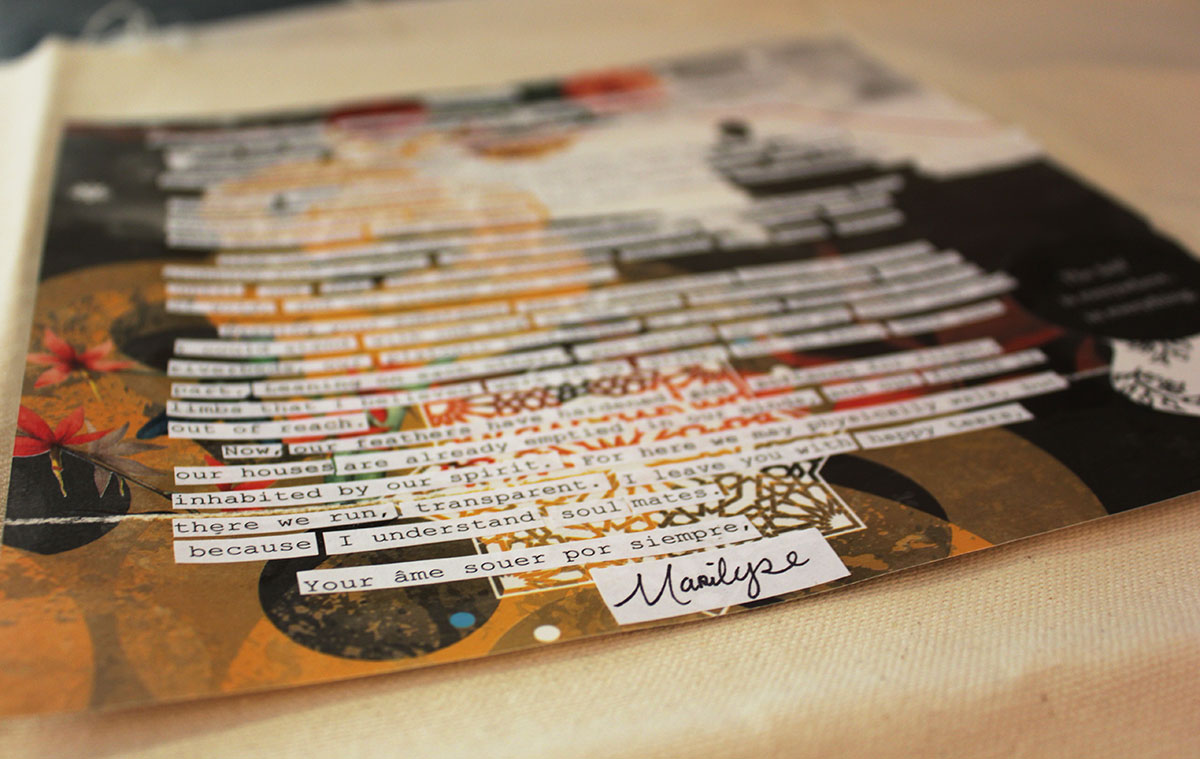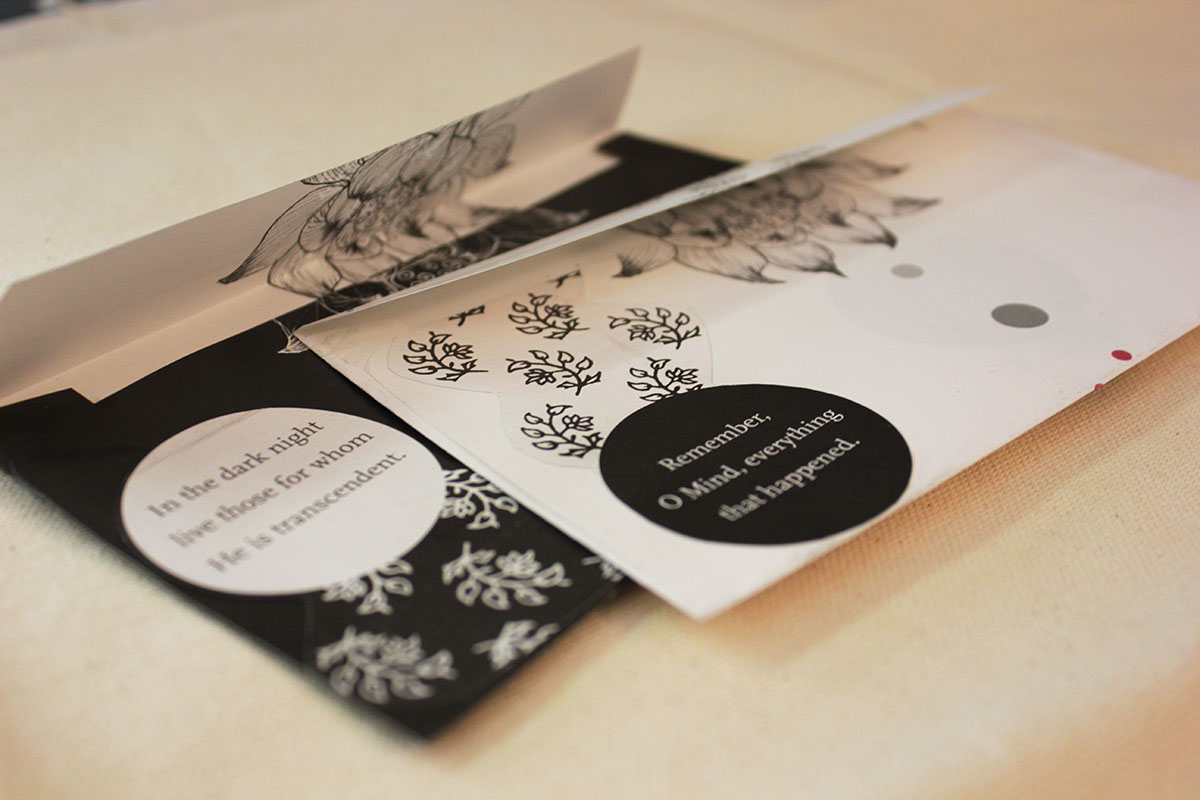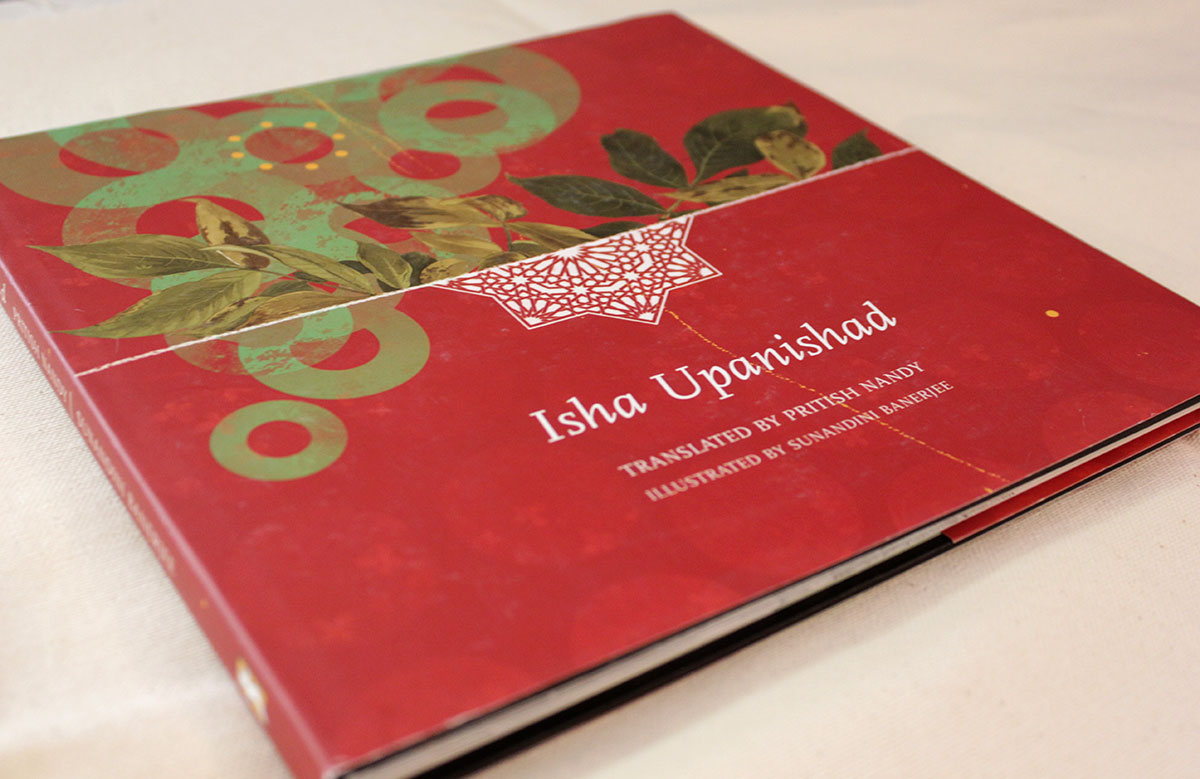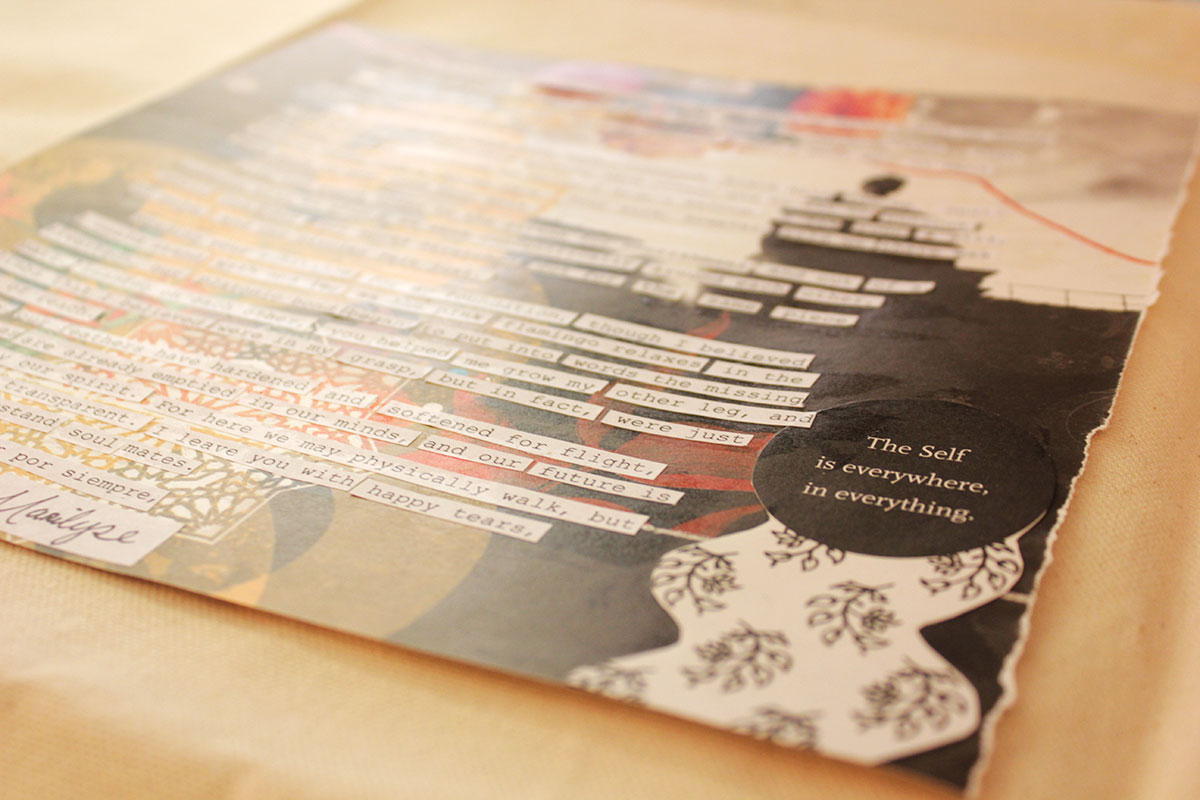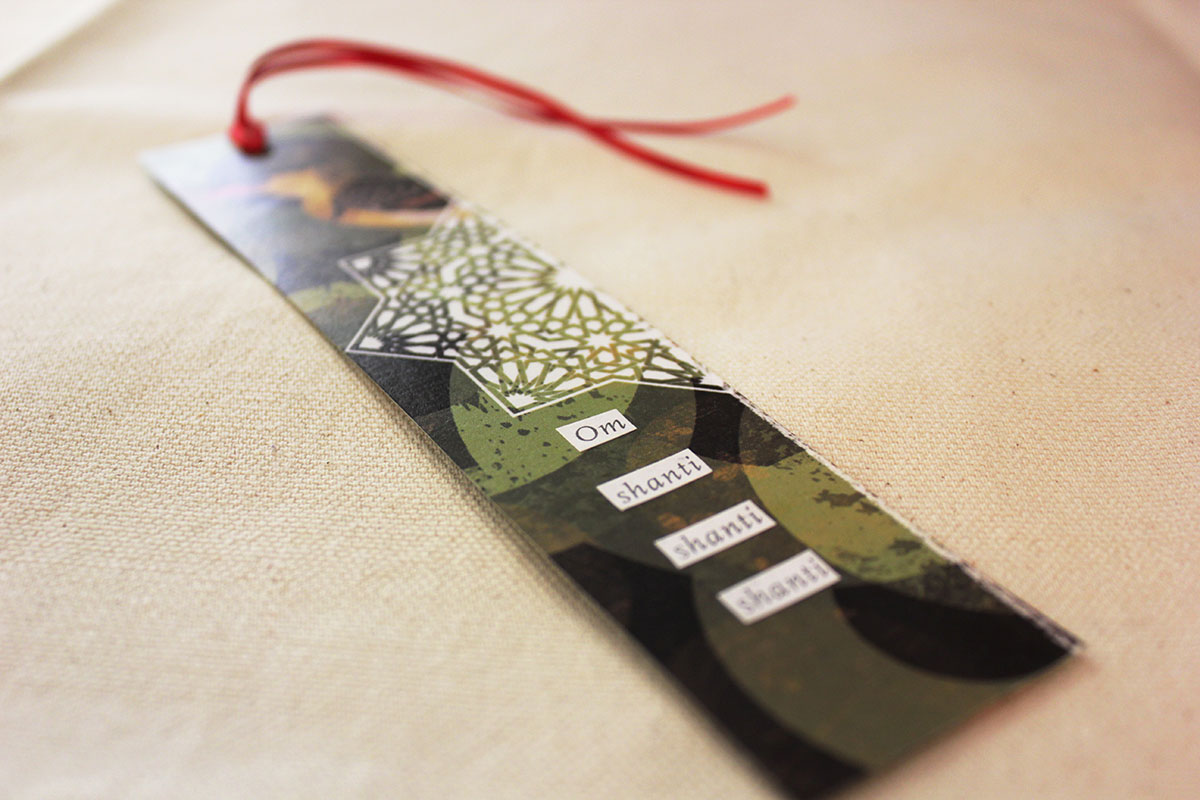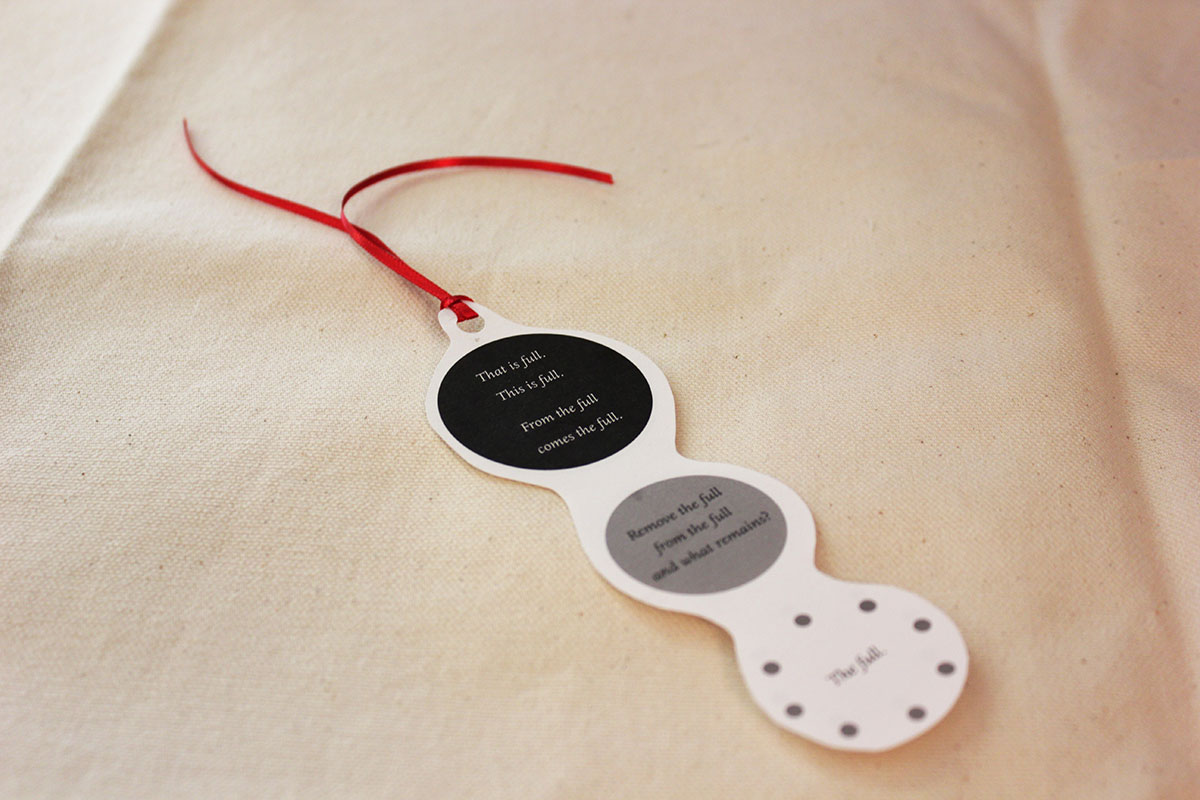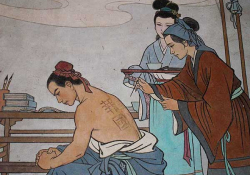Threefold Translation: Taking Scissors, Glue, and Tape to Books
Drawn to a book by its cover, a reader decides to give it to a friend. But on her way to write an enclosure letter, she takes a detour and ends up interacting with the book in unexpected ways.
I am a bibliophile. As a child my only complaint was that my eyesight was excellent: no glasses for this “bookworm,” as my sister liked to call me. As I have gotten older, I tried to cut down on my impulsive book buying, but it comes out on vacation when I plan a day to visit bookstores. Since I have had such a long relationship with books, it would seem odd that I have yet to adopt rigid book etiquette. I still dog-ear my pages and regularly underline, circle, and highlight in bright neon colors. I used to loan my books out with this humiliating preface, “Please excuse the, ahem, marginal comments . . .” However, I realized this only really matters to other bibliophiles, and by extension, perhaps the authors.
When I lifted the Isha Upanishad, translated by Pritish Nandy, off the bookshelves at the offices of World Literature Today, I was immediately drawn to this book for its particularly beautiful cover art by Sunandini Banerjee. I admit, I judge books by their covers sometimes. As I flipped through the pages, which smelled of rich ink and felt as firm as cardstock, my senses were doubly overtaken by the use of illustrations alongside the verses. This juxtaposition was a happy surprise. It felt as if it were, dare I say, the whole book experience. I was so charmed by this book that I decided to give it to a friend. At home, as I went to the printer to grab a blank white page to compose a letter to go along with it, I paused and made another impolite decision.
Like a sculptor, I took hold of the pages and squinted my eyes. I cut around the verses, put different parts of the poem together and took them apart again. The illustrations were not forgotten, and many images were either cut out and placed somewhere else or entirely covered up. Finally, I finished composing my letter out of the very book I thought would be a gift. I looked at the finished piece and marveled at the poems’ transformation. I began to wonder if the recipient of this parcel would recognize this as the Isha Upanishad, or a poem at all? I did not want to alter the meaning of the original work, though it appears impossible not to complicate this already twofold translation with another translation. But without knowing it, I had become a translator of translations.
While language evokes pictures in our minds like projections from another world, I believe adults begin to condescend toward books with illustrations because we equate them with a simpler time when we needed pictures to aid in our understanding. But this complete write-off of art does not attribute to it the same power we easily give to words: art deepens thought as well. Perhaps it was the powerful prose of the Isha Upanishad that caused something to “click,” but I believe it was simply the thought of translating something that was complete in its transformation of words and images. The translator shines some wisdom on this when he says, “Together, I would like to believe [the illustrations and the manuscript] may provide you a fascinating insight into the magic, the mystery, and the incredible eloquence of what Mahatma Gandhi once famously described as the most important of all our scriptures. The one book that could outlive all the rest.” I think Nandy would smile at my burgeoning translator antics because, as shown in our youth and here in this work, the translation of words not only takes the form of words but also must reach our senses through art. Some books even have the ability to translate well or possibly even better with some artistic conjuring.
Of course, I believe that authors and visual artists have the intrinsic right to pick what they think is the appropriate physical representation of their work. I perceive this when I look at book covers. They must be just as good as the words inside are because their colors, font, image, and size should all encapsulate the essence of the work. The poet Pierre Lecuire wrote about his work with painters in creating his books. Lecuire said, “First of all, I do not make ‘livres de peintre.’ I make obviously ‘livres de poète’ with painters. I make books of poems with the painters of my books.” Lecuire seems to be trying to prevent his books from being miscategorized, however, I believe that Lecuire sees his work with painters as representative of an amalgamation of the poems and art. Juxtaposed with each other, or side-by-side, these two mediums effortlessly coexist on the same page, which to me is evidence that the artist and poet accept the implication of influencing each other and thereby are both influencing the reader’s interpretation. Therefore, the words of my letter would inevitably influence the verses and images on the page, and my words are equally influenced by the verses and images. Perhaps Lecuire would pardon me since he says, “The poem and its book form a couple that is open, vibrant, desirable.”
Once it is released into the world, a book becomes difficult for the author to control. Initially I feared separating the poem would deprive it of meaning, though it had already gone through a translation, I now feel that the dissemination of this book, whether in part or in whole, is more important than being true to an original work that has already undergone a metamorphosis. I believe it’s not only important but also necessary for authors to accept that these things are out of their control; we translate as we read our own mother tongue, so the translation of a translation should be looked at as an opportunity to be incorporated into another culture’s view of the world.
I am still going to send my letter, and I have noted that the recipient did not receive the original gift—well, not exactly. I hope that other bibliophiles will be tolerant of this threefold translation, the translation of the verses, the verses’ translation into art, and the reader’s transformation of both. Perhaps it is dangerous that I have made a metamorphosis experience out of the book, but I will hold onto Pierre Lecuire’s words: “I do not make my books in order to hide, shelter, or valorize my poems. They do not constitute my alibis or my refuges.” These provide some comfort after my anonymous and probably ineffectual translation of this beautiful work of translation. As a reader and a writer, it is comforting to know that words and pictures can still be so effective to an adult audience, and not at all a mockery of the original.
Works Cited
Isha Upanishad. Pritish Nandy, tr. Sunandini Banerjee, illus. Calcutta: Seagull Books, 2014.
Lecuire, Pierre. “The Book and Its Poem / The Poem and Its Book.” Astrid Ivask, tr. Books Abroad. Autumn 1976.
